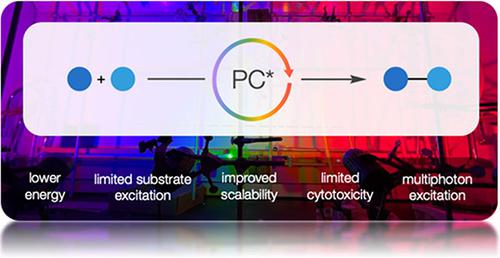Red-Shifting Blue Light Photoredox Catalysis for Organic Synthesis: A Graphical Review
IF 2.1
Q2 CHEMISTRY, ORGANIC
引用次数: 2
Abstract
Photoredox catalysis has revolutionized synthetic chemistry in recent decades. However, the field has traditionally used high-energy blue/ultraviolet light to activate chromophores. High-energy irradiation is associated with several drawbacks (e.g., activation of sensitive functional groups, undesired metal-ligand homolysis, background activation of molecules, and poor penetration), which has led researchers to develop alternative systems with lower energy deep red (DR) or near-infrared (NIR) light. This graphical review provides a concise overview of photophysical principles relevant to photoredox catalysis. Several applications that benefit from low-energy irradiation, such as large-scale batch reactions, photodynamic therapy, biological labeling, and multi-photon excitation are reviewed.

有机合成中红移蓝光光氧化还原催化:图解综述
近几十年来,光氧化还原催化已经彻底改变了合成化学。然而,该领域传统上使用高能蓝光/紫外光来激活发色团。高能辐射与几个缺点有关(例如,敏感官能团的活化、不希望的金属配体均聚、分子的背景活化和较差的穿透性),这导致研究人员开发了具有较低能量深红色(DR)或近红外(NIR)光的替代系统。这篇图表综述简要概述了与光氧化还原催化相关的光物理原理。综述了低能辐照的几种应用,如大规模批量反应、光动力治疗、生物标记和多光子激发。
本文章由计算机程序翻译,如有差异,请以英文原文为准。
求助全文
约1分钟内获得全文
求助全文

 求助内容:
求助内容: 应助结果提醒方式:
应助结果提醒方式:


